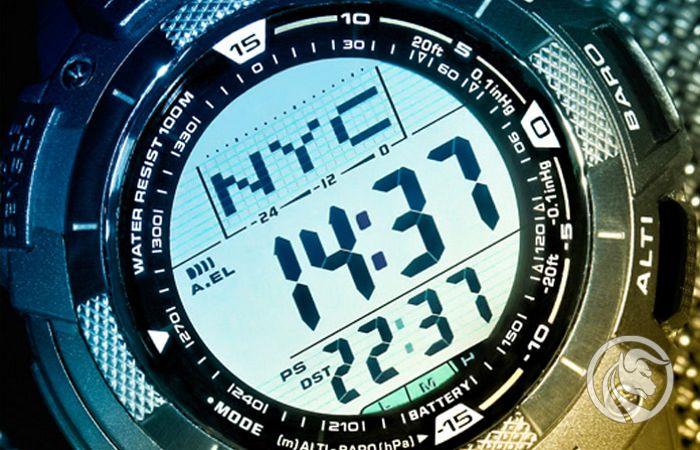Timeframe Forex. We choose the time interval.
Charts of financial instruments are drawn on the basis of continuous quotations that flow into the platform. They are then displayed in the selected form and the time range indicated by us. Selecting the time interval (from timeframe - TF), on which we will analyze and on the basis of which we will make transactions, may affect many things, such as our investment style, the strategy itself or even the agenda.
A low time scale is a relative term, however, subjectively I would estimate that low is all smaller than 15-minute (M15). Long from 30-minute (M30) to daily (D1), and above are very long intervals. Each of the ranges has its own advantages and disadvantages that affect the way of investing or the amount of time it takes to market.
Timeframe Forex - short or long time frame?
Short intervals mean that our transactions last up to one day. Usually in such a dynamic market as Forex, it will be a maximum of several hours. It may also be associated with more signals coming from transaction system. Instead of one per week, you can have several or over a dozen (depending on the system) per day. The disadvantage is the increased amount of emotions, because each transaction is somewhat stressful. We need to take into account more factors and analyze them faster than long intervals. In addition, you need to track quotes for a given part of the day, where in case Day-traders it is usually at least a few hours a day not to let the signal pass and react appropriately if market conditions change and we have an open position. The plus is the narrower distance of Stop Loss orders, which makes it easy to manage capital accurately (it is easier to choose the volume to the degree of accepted risk, even with a small deposit).
READ NECESSARY: An unnoticed filter of market behavior, or a few words about the volume
At long intervals, the day becomes looser and less stressful. It is enough to spend several dozen minutes on the analysis, because the situation changes significantly more slowly there. There are also usually fewer positions, as there are fewer transaction signals.
At very high intervals, i.e. above daily, in this respect we have even more comfort. Just visit the platform once a day. In a few moments we will see if something has changed on the market. The number of transactions concluded is very small, and this is due to the fact that each position opening should be extremely thoughtful. We do it so rarely that it is better that even the entry level itself is extremely precise. Otherwise, we can wait a long time for the transaction to come to any plus. In addition, it is more difficult to manage capital here. Stop Loss is usually very far from the entry point, which involves using a small volume or having a large deposit. Something at the expense of something.
Tracking many intervals
You do not have to limit yourself to one interval or even to one interval (short, long, very long). This can be seen as a way to diversify risk. If we have the right system, we can conclude transactions in different time scales in parallel. It will make us relax not only the risk but also stress and the plan of the day. The downside of this solution is the possibility that at some point in the same market, however, we will receive opposite signals on other TFs. On a low system it will suggest buying, on a high sale. This does not mean that one of them may be wrong, because in the given time scale both positions may end in a profit (depending on SL and TP), however, it may raise doubts in the investor's head as to the correctness of the strategy used.
READ ALSO: Short Term Profit. Strategy for low intervals
A very popular technique is to analyze markets at multiple intervals and conclude transactions only when signals match. For example, we are waiting for a signal from our system on a 1-hour (H1), and when it appears, we look at what is happening at lower time scales. If signal it is confirmed, we go down even lower and we are looking for the best entry point, e.g. at the M5 interval, for the signal generated by the system at the H1 interval. If we recognize the course behavior correctly, this method will result in more precise entries.
More does not mean better
The smaller the time interval, the more transactions. And this is an undeniable fact. In contrast, budding investors often push to the lowest possible TF to have more signals. Incorrectly assuming that this will lead to more pips collected, which will translate into achieved income. Unfortunately, this is not necessarily the case. This will cause that we will generate a higher turnover while the achieved income will already depend on quality position and how it will close. So what if we conclude 20 transactions a day at a low interval, as they ultimately bring us a total income of 20.0 pips? This means that we take more risk (or rather more times we take similar risk) and incur higher transaction costs, while we could focus on quality and in three carefully selected transactions at a larger interval, risk less, pay less to the broker and achieve a better result? In this case, more transactions do not mean a better result.
Short-term intervals are more absorbing. Absorbing temporarily and emotionally, which requires additional effort put into the trade by the investor, for which it must be prepared.






















![Forex Club – Tax 9 – Settle tax on a foreign broker [Download the Application] Forex Club - Tax 9](https://forexclub.pl/wp-content/uploads/2024/02/Forex-Club-Podatek-9-184x120.jpg?v=1709046278)
![Trading View platform – solutions tailored to the needs of traders [Review] trading view review](https://forexclub.pl/wp-content/uploads/2024/03/trading-view-recenzja-184x120.jpg?v=1709558918)
![How to connect your FP Markets account to the Trading View platform [Guide] fp markets trading view](https://forexclub.pl/wp-content/uploads/2024/02/fp-markets-trading-view-184x120.jpg?v=1708677291)
![How to invest in ChatGPT and AI? Stocks and ETFs [Guide] how to invest in chatgpt and artificial intelligence](https://forexclub.pl/wp-content/uploads/2023/02/jak-inwestowac-w-chatgpt-i-sztuczna-inteligencje-184x120.jpg?v=1676364263)




![Izabela Górecka – “Success on the market depends not only on knowledge, but also on emotional stability” [Interview] Izabela Górecka - interview](https://forexclub.pl/wp-content/uploads/2024/04/Izabela-Gorecka-wywiad-184x120.jpg?v=1713870578)
![WeWork – the anatomy of the collapse of a company valued at $47 billion [WeWork, part II] wework bankruptcy story](https://forexclub.pl/wp-content/uploads/2024/04/wework-bankructwo-historia-184x120.jpg?v=1711729561)
![Adam Neumann – the man who screwed up Softbank [WeWork, part AND] adam neumann wework](https://forexclub.pl/wp-content/uploads/2024/04/adam-neumann-wework-184x120.jpg?v=1711728724)




![The most common mistakes of a beginner trader - Mr Yogi [VIDEO] Scalping - The most common mistakes of a beginner trader - VIDEO](https://forexclub.pl/wp-content/uploads/2024/03/Scalping-Najczestsze-bledy-poczatkujacego-tradera-VIDEO-184x120.jpg?v=1711601376)
![Learning patience: No position is also a position - Mr Yogi [VIDEO] Scalping - Learning patience - No position is also a position - VIDEO](https://forexclub.pl/wp-content/uploads/2024/03/Scalping-Nauka-cierpliwosci-Brak-pozycji-to-tez-pozycja-VIDEO-184x120.jpg?v=1710999249)
![When to exit a position and how to minimize losses - Mr Yogi [VIDEO] Scalping - When to exit a position and how to minimize losses - VIDEO](https://forexclub.pl/wp-content/uploads/2024/03/Scalping-Kiedy-wyjsc-z-pozycji-i-jak-minimalizowac-straty-VIDEO-184x120.jpg?v=1710336731)

















Leave a Response